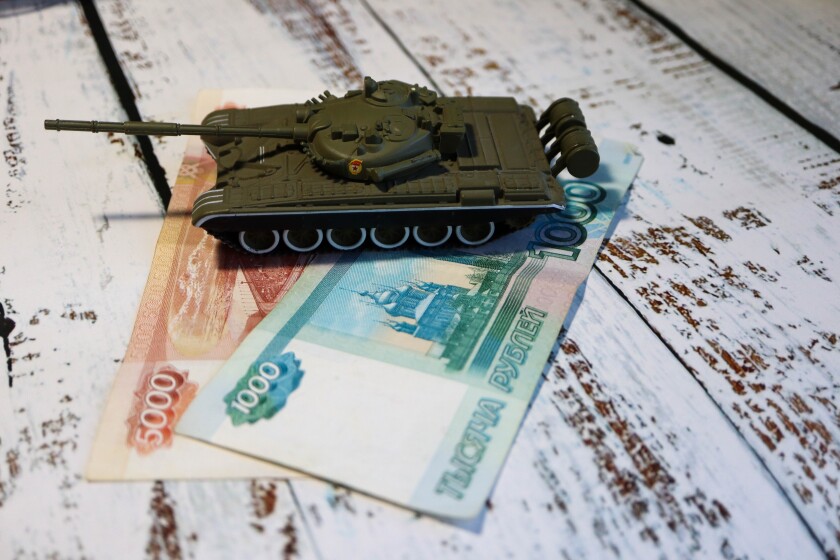Bond issuance in the currencies of central and eastern Europe and central Asia will remain an important part of the European Bank for Reconstruction and Development’s funding, despite the disruption caused by the war in Ukraine.
Extreme volatility has struck financial markets this year, particularly emerging market assets. Nevertheless, the EBRD has issued 10% of its debt this year in ‘local currencies’ — those of its countries of operation — down from 11% last year.
Its funding in other EM currencies has actually increased to 18% from 13% in 2021. Issuance in major currencies has fallen from 76% to 72%.
“Our funding currency mix is very comparable to previous years,” said Isabelle Laurent, deputy treasurer and head of funding at the EBRD.
But it has not been an easy environment. “In the first period of the war, for two to three weeks we kept doing emerging market currency deals, they were working,” said the head of medium term notes at an investment bank. “But this and last week, it’s quiet across all EM currencies. It’s a bit hairy with the EM currency deals right now, and I think it’s a different approach from supra to supra as to what they can issue.”
Russian rouble bonds were an important strand of EM currency issuance for supranationals before the war. The EBRD issued one two days before the invasion.
According to Dealogic records, overall, the EBRD has Rb60bn ($859m) of rouble bonds outstanding. The World Bank has issued 15 rouble bonds with maturities after February 24 this year — when the war began — stretching out to May 2031. They totalled Rb40bn ($583m).
The IFC has issued 17, totalling Rb56bn ($850m), maturing until April 2032. With all these issuers, some of the notes may have been redeemed early, which Dealogic’s database would not capture.
The rouble plummeted against the dollar after the invasion, but has since recovered all its losses.
Nevertheless, the dealer said arranging new rouble bonds now was off the table as “no issuer wants to issue and no bank wants to settle or clear these kind of deals” amid global sanctions.
The IFC halted issuance of new rouble debt in mid-February. It had put the Turkish lira on hold a few years ago and has also paused issuance in Kazakh tenge, where market sources report liquidity constraints for international borrowers.
“We will continue to service our rouble bonds in consistency with their terms and conditions, and, as is the case with our exotic currency issuance in general, these bonds also incorporate market disruption clauses to facilitate their servicing,” said Laurent.
The World Bank has been able to make payments on its rouble bonds and expects to keep doing so until maturity. As with its other bonds, investors can always sell them back to the World Bank through dealers if they want to.
The IFC too has been making payments on its rouble bonds. Buybacks can be easier, as these are completed in dollars through bilateral agreements.
Meanwhile, the EBRD remains committed to issuing a wide range of currencies, from the Turkish lira to meeting demand for synthetic local currency notes.
“We have been a consistent issuer of rouble bonds and those of other local and emerging market currencies since the 1990s, and expect this focus to continue,” said Laurent.
